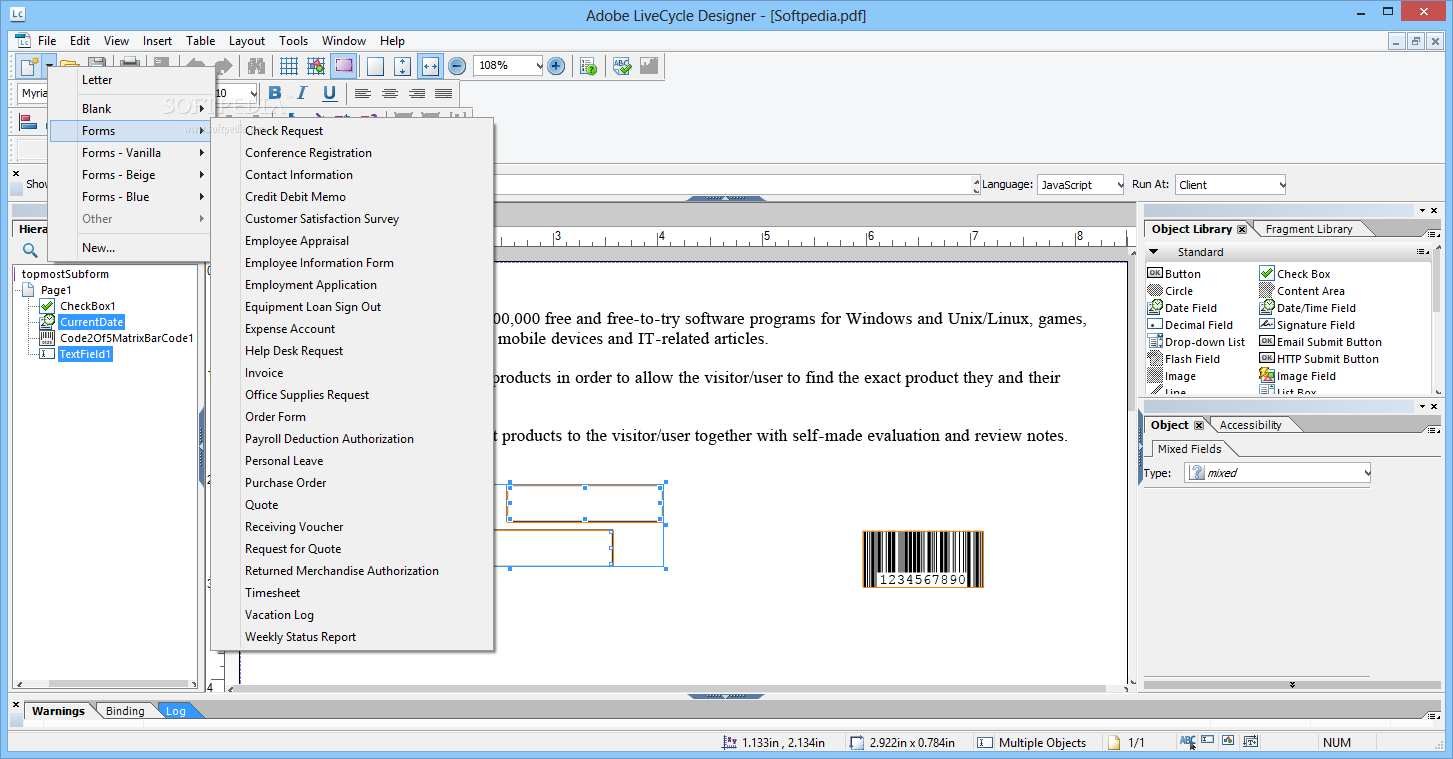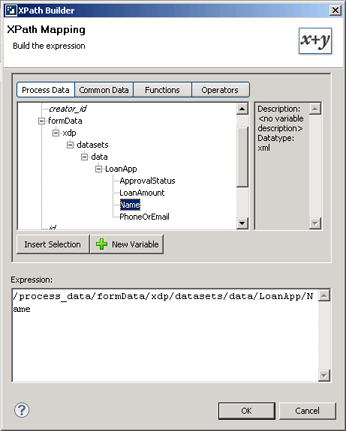Adobe Livecycle Es4
Note: Adobe LiveCycle Designer is now superseded by Adobe Experience Manager forms (AEM forms), which offers the same features and much more. For more information, press the 'Download' button. Adobe LiveCycle Designer is part of Adobe's authoring tools family, providing you with a professional form designing software solution with support for XML data and schema bindings. It bundles a rich feature set with tools that can work together in order to create interactive and dynamic forms. The package comes with a consistent set of predefined templates that offer you a starting point in creating your own layout.
From simple order forms to conference registrations, customer satisfaction surveys, employment applications, you have it all within reach. The rich library includes a wide array of objects that can be inserted into your document, including buttons, circles, specialized fields (date / time, signatures, Flash, decimal data, passwords, barcodes), list boxes, drop-down lists, images, check boxes, content areas, submission buttons and the list does not end here. Furthermore, the object editor helps you modify the appearance and the properties of an item to match your vision. The application features a powerful spell checking engine and customizable dictionaries that aim to reduce the error number to a minimum. Moreover, the formatting and layout adjustment options assist you in arranging the elements within a page and giving the output a compact look.
Adobe LiveCycle Designer features scripting (FormCalc and JavaScript) tools for more complex designs, as well as advanced data binding capabilities. It automatically generates the XML source, while the preview function enables you to take a peak at the final product prior to deployment. The output form templates can be printed directly from the application, saved as PDF documents or exported to HTML5. The working environment is intuitive enough to help beginners and experienced users to generate form and document templates without requiring advanced computer knowledge. On an ending note, Adobe LiveCycle Designer comes with advanced XML data handling tools, allowing the creation of professional-looking XML forms, without requiring high experience from the user's part.
Adobe® LiveCycle® ES4 server can be set up using any combination of supported operating systems, application servers, databases, database drivers, JDK, LDAP. In an earlier blog post we announced the upcoming release of LiveCycle ES4. The LiveCycle team is very pleased to inform you that LiveCycle ES4 is now generally.
A paper forms barcode electronically captures user-supplied data in an interactive PDF form. When an end user fills the form using Adobe Reader or Acrobat, the barcode is updated automatically to encode the user-supplied data. The user can then return the filled form by printing it and returning it by fax, mail, or hand. Upon receipt, the user-supplied data can be decoded using a scanning device. To use the paper forms barcode object, your organization must have implemented Reader Extensions. The Barcoded Forms solution provides a workflow where users completes the form using Adobe Reader and the data is automatically encoded into the barcode.
After the form is printed and the paper copy returned to you, you can extract the form data by using a common barcode scanner. The result is 100% data accuracy, eliminating the need for rekeying data. Using the paper forms barcode in a form eliminates the need for manual data entry or OCR-based forms processing.
Data captured from fill-and-print paper forms can be reinserted into the electronic workflow quickly and accurately, with no loss of data caused by scanning or manual rekeying mistakes. Furthermore, you can retain a digital copy of the transaction, complete with ink signatures. For example, a company has a PDF form that can be filled electronically. However, the form requires the user’s signature; therefore, the completed form must be printed, signed, and returned by fax or mail. By including a paper forms barcode on the form, the data entered electronically is encoded into the barcode. When the printed form is returned, a barcode reader can read all of the captured data into a structured data file.
Only the signature needs to be verified. The paper forms barcode object is a two-dimensional (2D) barcode that is encoded with an industry standard PDF417, QR Code (Version 2), or DataMatrix (the ECC200 model) symbology.
It includes an intelligent calculation script that encodes the data captured in a form’s fields. You select the form fields to be encoded by the paper forms barcode. However, because the barcodes have limited storage capacity, it is important that you select only required fields. After you add a paper forms barcode to the form design, you specify its properties so that it behaves in the manner appropriate for your requirements.
Using the Object palette, you can define these properties and others for the paper forms barcode:. Barcode label. Symbology encoded in the barcode.
Adobe Livecycle Es4 Trial

Adobe Live Cycle Book
Scanning method used to decode the paper forms barcode. Error correction level, and the module width and height of the barcode (when you choose a custom scanning method).
Object’s visibility on the form. Data compression options. Form data to include in the barcode. Data format that the paper forms barcode uses to encode data and the fields to be included When you distribute your finished form, users fill the form, print it, and return it. H. n. white trumpet.
Adobe Livecycle Es4 Training


After received, the user-supplied data is decoded by using a scanning device. Consider the following points when designing forms that include the Paper Forms barcode object:. The Paper Forms Barcode object encodes data that users type in a fillable PDF form. The use of paper forms barcodes for paper forms processing requires Reader Extensions. Users must use Acrobat or Adobe Reader 7.0.5 or later to fill a form using QR Code or Data Matrix Paper Forms Barcode.
Therefore, form authors must not save the form as either Acrobat 7.0.5 Compatible or Acrobat 6.0.2 Compatible. Users must use Acrobat or Adobe Reader 7.0.5 or later to fill a form that includes the PDF417 Paper Forms Barcode.